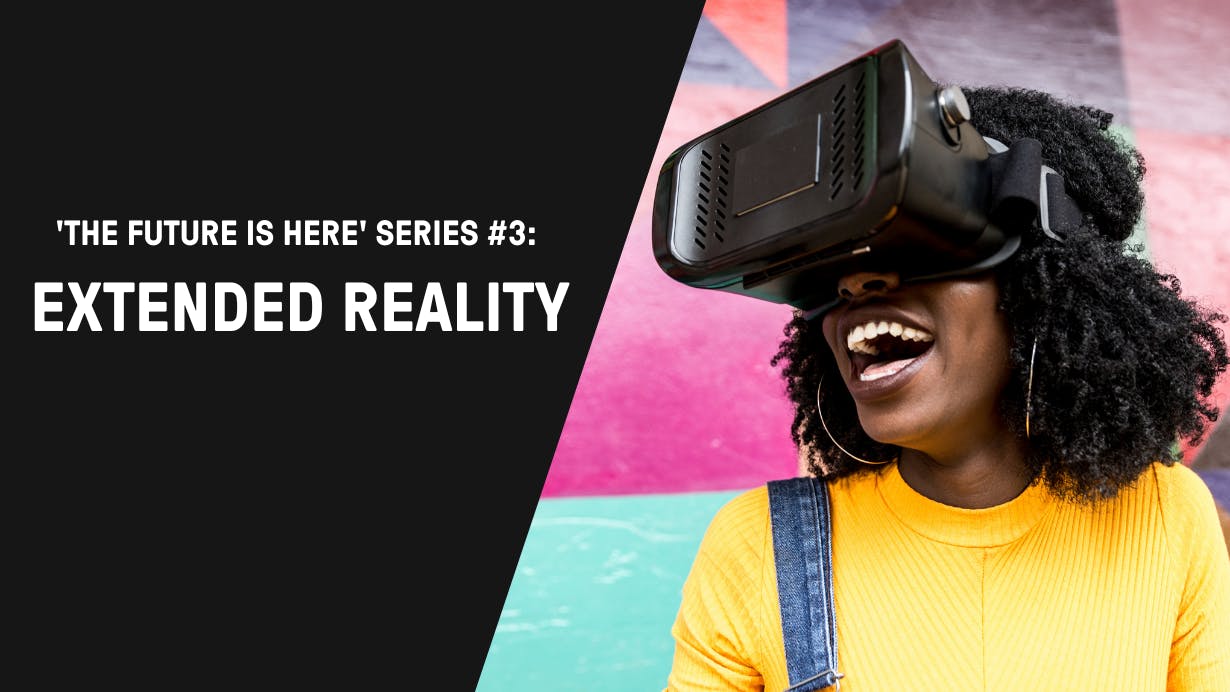
“With VR, what happens when we become saturated with this tech? Do we become desensitized by this type of media… once mainstream adoption happens, what happens then?” - Anton Andreacchio
Following from our earlier events, we were delighted to hear about XR from renowned futurist Rocky Scopiletti, and entrepreneurs Anton Andreacchio from Jumpgate, and Ingo Lau from Micology.
Rocky proposed a ‘data-first’ perspective as the key to unlocking potential in the XR space. In his research, he found that data was the common denominator across the top five emerging technologies, which would result in increasing recognition of data as an asset.
He also highlighted the multiplicative effect of technology. Combinations of new technologies, he noted, lead to new ways of experiencing or fulfilling processes; combining 5G technology and the Internet of Things (IoT), will allow for greater connectivity. As the digital world becomes more decentralised, immersive and distributed, the physical world becomes increasingly interconnected.
Anton also discussed the wide range of use cases of extended reality across various industries, focusing on the human intersection with technology and the value brought by these interactions. He stated that working on projects across a broad range of industries has allowed his company to be sustainable amidst the hype cycles often associated with new and emerging technologies.
some applications of extended reality technology include:
- A virtual stroke protocol training program
- Coaching in the Australian Football League (AFL) space
- The contemporary art space, an area that he is most excited about, particularly around the concept of ‘XR as canvas.’
Rather than starting with technology, he explained that his approach is to consider human interactions with technology as a starting point.
Ingo touched on the limitations of solving problems in a two-dimensional medium, stating that interactions in a three-dimensional medium allows for the easier solution of real-world problems. Visualising models in 3D, for example, allows for the perception of depth, which greatly aids work in the civil engineering space.
Ingo also described how the uptake of new technologies by companies, especially those working in government, needs to be driven by the sector itself. This is because companies often use older technologies and require assistance - more prototypes and proofs of concepts - to assist stakeholders in identifying how new technologies can assist them.
Anton and Ingo were in agreement that mining is a sector that has already embraced XR technology and that greater uptake of XR will occur in the next five to ten years. A downside to working in the space is that the pressures of scalability and finance can drive conversations that don’t leave room for understanding ethical aspects of technology.
Both agreed that the human element of XR is of the utmost importance, that XR is about helping people communicate with one another, and that there are roles for humans to play in dealing with complex problems and data.
You can watch the full discussion on our YouTube channel here.
Join Stone & Chalk’s mailing list to stay up-to-date with this and more here.
Don’t miss out on our 42-page Capital Raising Guide for startups. This guide explains funding stages, financing methods, pitching and government initiatives. It also contains additional resources and capital raising case studies. Download your free guide now!